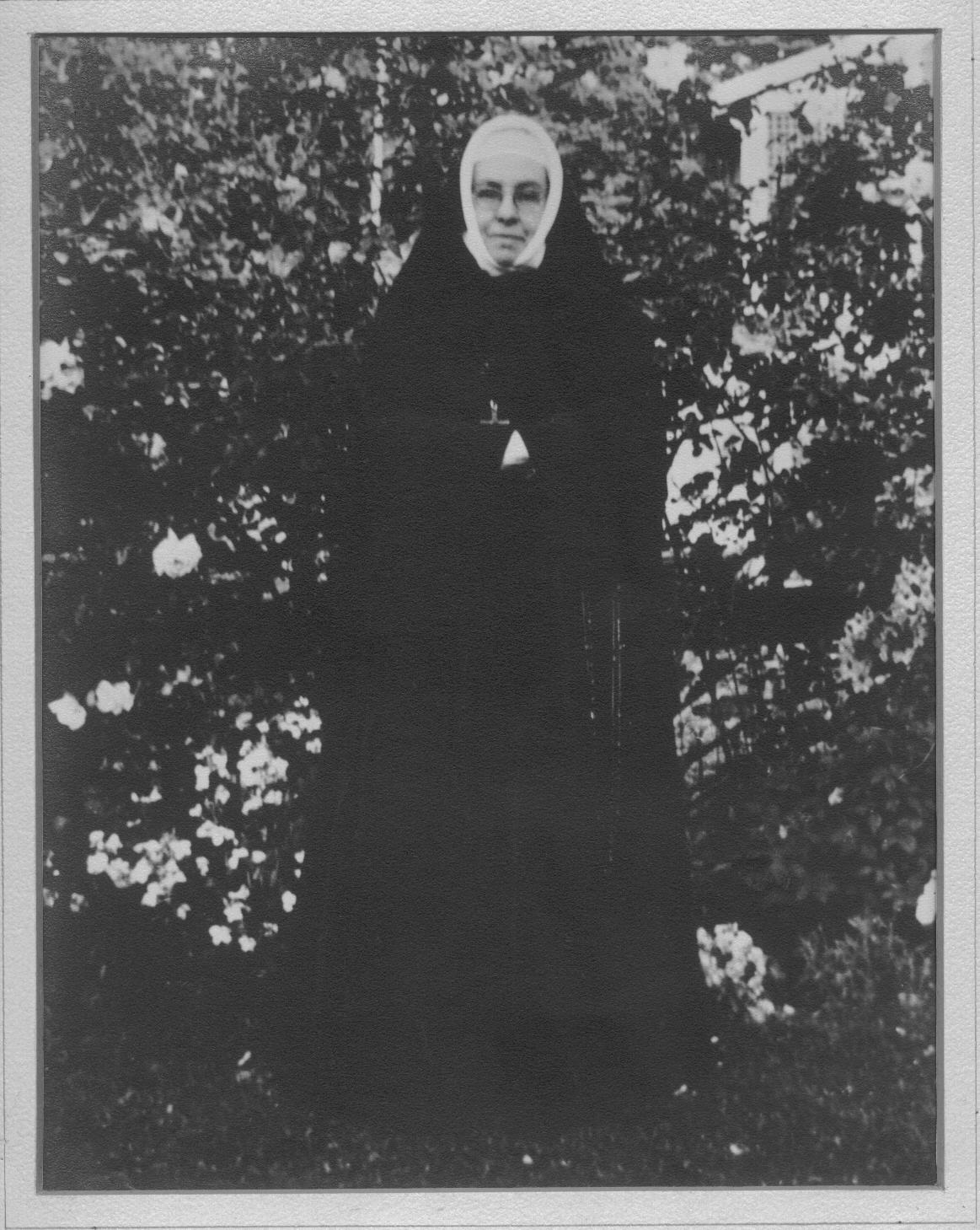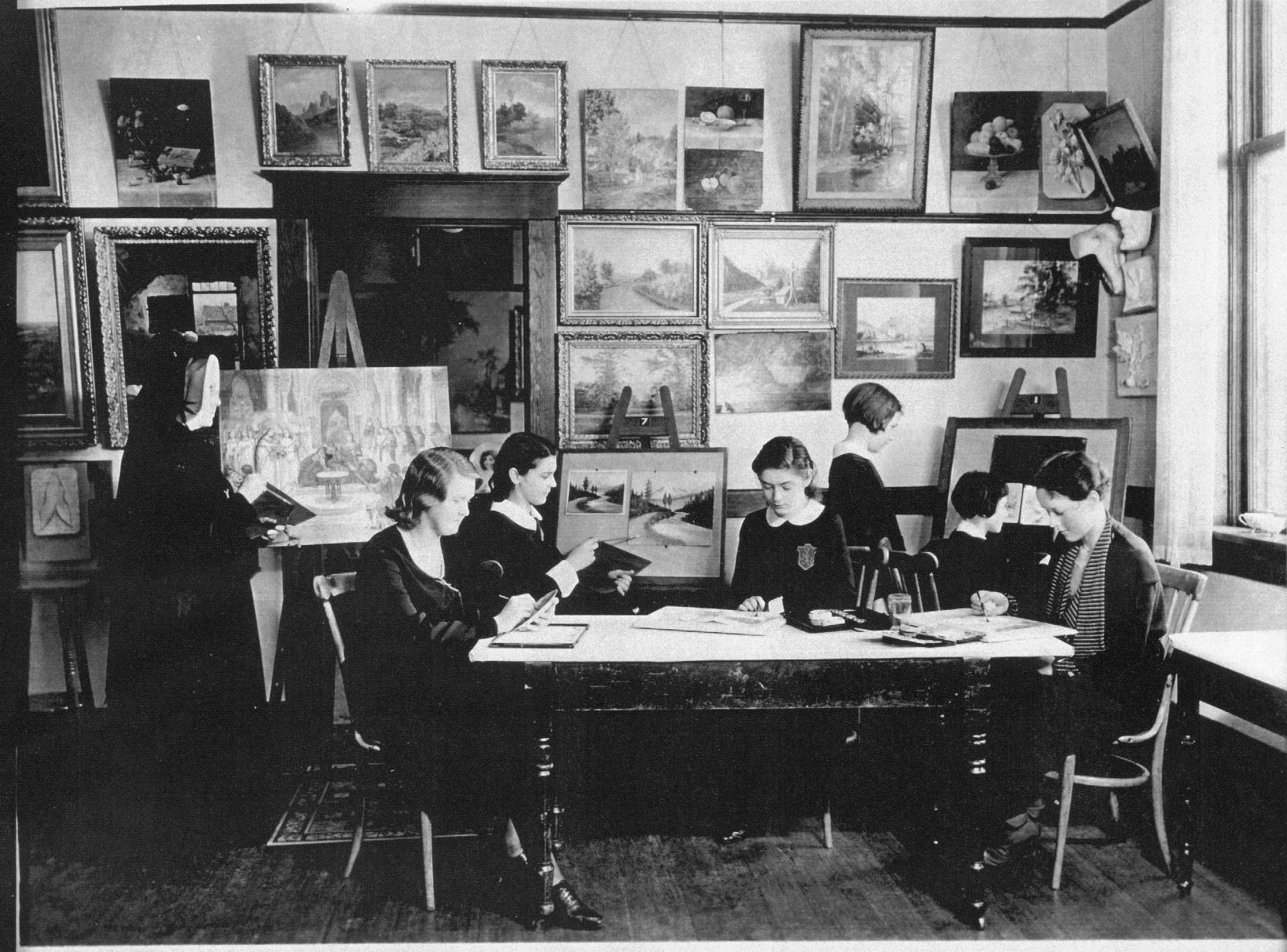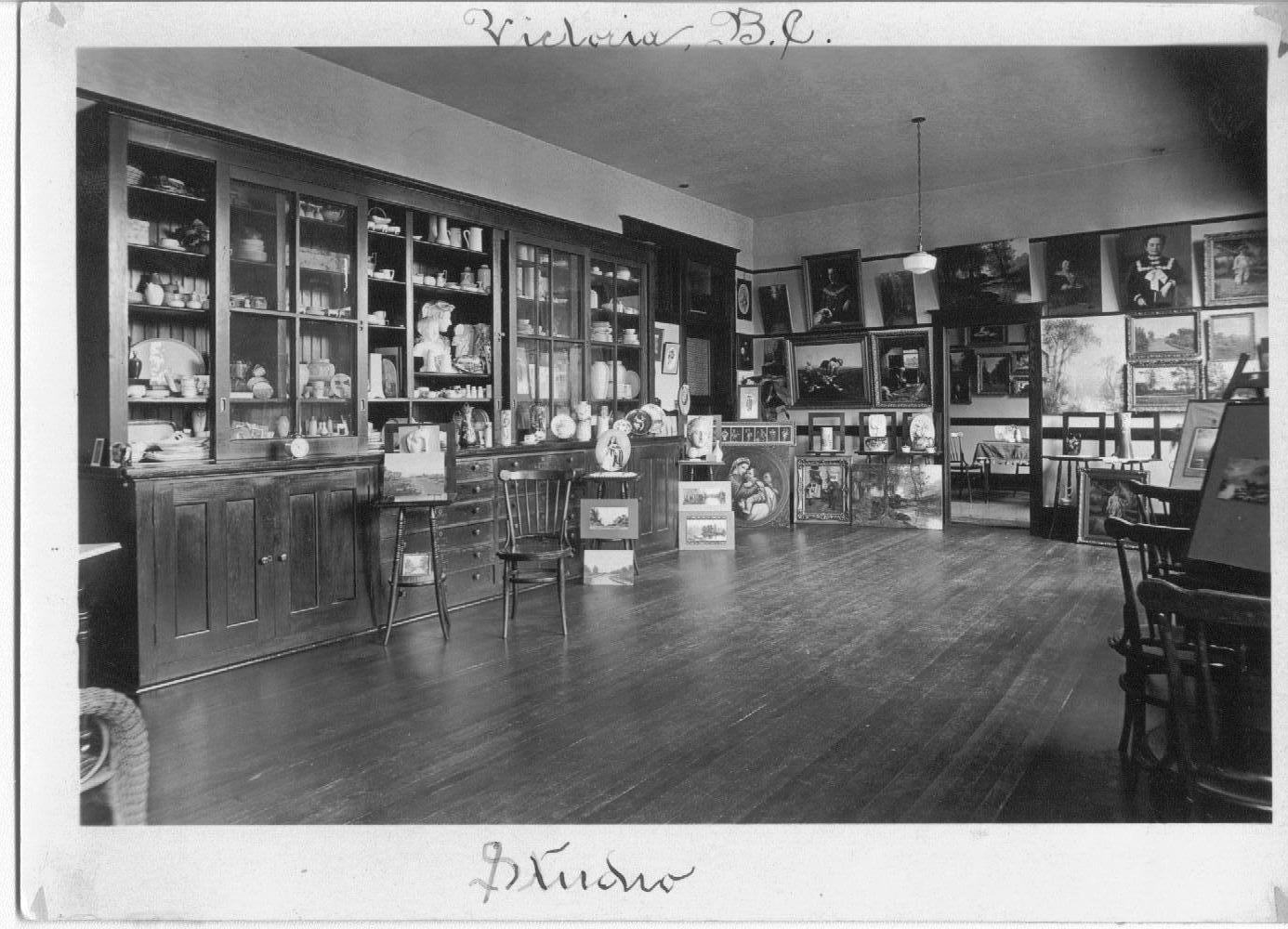Sister Mary Osithe was Born in Sorel, Quebec on May 23, 1867. Osithe attended a convent in Sorel conducted by the Sisters of the Congregation of Notre Dame then furthered her studies in Malboro, Massachusetts until St. Ann's academy was opened in that city.2 Sister Osithe was taught under Sister Mary Helen of the Cross, who headed an ambitious art program at the mother house in Lachine near Montreal. World renowned artists and art educators, William Rapheal from Germany (1833-1914) and Edmund Dyonnet from France (1859-1954) also taught Osithe in Lachine. Just as Osithe was gaining confidence in her artistic abilities and artistic relationships with her instructors, she was assigned to the Victoria B.C.in 1897 to replace an art instructor, Sister Mary Sophie (Labelle) at St Ann's Academy. Labelle taught and developed an art program with the sisters and community for 25 years and died in 1896.3
Osithe is recognized as an established an oil painter, water colourist, as well as china painter, calligrapher, photographer, and architect. With guidance from her Mother house, and the already talented and established artisans within the academy, Osithe pioneered a graduated art program at St. Ann's in 1907, featuring 'the study of drawing from the antique, from life, from still life as well as perspective and art composition and other art forms. Osithe's art instruction and artwork stimulated interest outside of St. Ann's Academy. She took commissions and organized an annual exhibition of her own and her student's work, all of which raised funds for the school. Several times during the exhibitions, Osithe had to "hire extra teachers to satisfy the demands for lessons in various art forms."4
June 1913 local paper from Father Brabant's scrapbook, reported on St. Ann's visual art exhibition which featured the work of seventy students and included drawings from plaster models, landscapes oils, watercolours, and china painting as well as sewing and darning. This photograph (below) appeared originally in a local newspaper with the caption" Regulations of St. Ann's convent prevent any of the sister's pictures being photographed alone, as they frown on publicity. However, after much persuasion, the Mother Provincial consented to Sister Mary Osithe being photographed with her class."5
Osithe was considered a reverent authority and humble artisan her whole life as an artist and architect. Her religious and ever courteous control was more evident in her habitual evenness of temper, deference to the wishes of others and the ignoring of slights, intentional or otherwise, to be met with common life.6 "Osithe was more free to work on her own projects and assist with the design of interior rooms and buildings as a growing interest in modern or commercial art increased throughout the 1920's to 30's and traditional art classes were not as in high demand. She was involved in several assignments throughout Duncan, Nanaimo, Kamloops, Vancouver and Victoria. The Little Flower Academy in Shaughnessy Heights,Vancouver was in part designed by Osithe. The library cafeteria area was renovated in 2007 but was once The schoolhouse ("Foundress Hall") and is one of the few remaining examples of her architectural work. In 1932-33 Osithe supervised the construction of Bulkey Valley District Hospital in Smithers. With regards to this hospital Newsletter recording the opening events reads, "The plans were sketched by Sister Mary Osithe, but drafted graciously by Provincial Architects H. Whittaker and his assistant Mr Hargreaves. Through out the construction, Sister Mary Osithe supervised the carrying out of the plans.7 St Ann's Academy gymnasium and kitchen's completion in 1922 was met with little fanfare. The construction bill, listing a Statement of Cost totaling $3299.05 and Morry and Chamberlain as the contractors, is one of the few records from the project. A wing of St Joseph's hospital and the nurses residence was also designed by Osithe in 1911-12. 8



